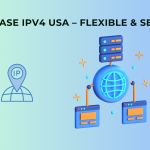As one of the foundational technologies driving modern networking, IPv4 addressing and subnetting are essential skills for network engineers and IT professionals. IPv4, the fourth version of the Internet Protocol, is a widely adopted standard for identifying devices on a network. This blog explores the fundamentals of IPv4, how it works, and the significance of subnetting in network management.
What is IPv4 Addressing?
IPv4 (Internet Protocol Version 4) is a 32-bit address that uniquely identifies devices on a network. It has been the backbone of the internet for decades, assigning unique identifiers to every device connected to the web or local networks. IPv4 addresses are represented in four decimal numbers separated by dots, with each number ranging between 0 and 255.
Example IPv4 Address:
192.168.1.1
Each section in the address represents an octet, and collectively, an IPv4 address consists of four octets (or 32 bits). This address format is crucial in determining how data is routed across the internet, allowing devices to communicate seamlessly.
The Importance of Subnetting in IPv4
Subnetting refers to the process of dividing a large network into smaller, more manageable subnetworks or subnets. This allows for more efficient utilization of IP addresses and improves network performance by reducing traffic congestion.
By utilizing subnetting, organizations can optimize their networks by:
- Reducing broadcast traffic
- Improving network security by segmenting different departments or functions
- Conserving IP addresses, particularly in large organizations
How Does Subnetting Work?
Subnetting is achieved through the use of a subnet mask, which distinguishes the network portion of an IP address from the host portion. A subnet mask uses a combination of 1’s and 0’s, where the 1’s represent the network portion, and the 0’s represent the host portion of the address.
Example Subnet Mask:
255.255.255.0 (binary: 11111111.11111111.11111111.00000000)
In this example, the first three octets (24 bits) represent the network, while the last octet represents the hosts on that network. Subnetting helps control how many devices (hosts) can be supported in each subnet.
IPv4 Address Classes
IPv4 addresses are divided into five distinct classes (A, B, C, D, and E), each with different default subnet masks and address ranges. The first octet of the IPv4 address determines its class, which dictates how many networks and hosts are available.
- Class A: Designed for large networks with millions of hosts. Address range: 1.0.0.0 – 126.0.0.0
- Class B: Suitable for medium-sized networks. Address range: 128.0.0.0 – 191.255.0.0
- Class C: Best for small networks with fewer hosts. Address range: 192.0.0.0 – 223.255.255.0
Each class has a default subnet mask:
- Class A: 255.0.0.0
- Class B: 255.255.0.0
- Class C: 255.255.255.0
Classless Inter-Domain Routing (CIDR)
CIDR (Classless Inter-Domain Routing) offers a more flexible way of defining IP addresses and subnet masks, outside the limitations of the traditional class system. It represents the subnet mask by appending a forward slash (/) followed by the number of bits used for the network portion.
Example:
192.168.1.0/24 means that the first 24 bits are used for the network, leaving the remaining 8 bits for host identification. This method allows for more efficient use of IP addresses and has become the standard for most modern networks.
Public vs. Private IPv4 Addresses
There are two types of IPv4 addresses: public and private. Understanding the difference is critical for network planning and security.
- Public IP Addresses: These are globally unique addresses assigned by the Internet Assigned Numbers Authority (IANA). They are routable on the internet and are necessary for any device that needs to communicate outside its local network.
- Private IP Addresses: These are reserved for use within private networks and are not routable on the internet. They provide organizations with a way to manage internal communication without wasting public IP addresses.
Private IP Address Ranges:
- Class A: 10.0.0.0 – 10.255.255.255
- Class B: 172.16.0.0 – 172.31.255.255
- Class C: 192.168.0.0 – 192.168.255.255
What is Network Address Translation (NAT)?
To enable communication between private networks and the internet, Network Address Translation (NAT) is used. NAT allows multiple devices within a private network to share a single public IP address, conserving the limited pool of public IPv4 addresses.
NAT not only conserves IP addresses but also adds a layer of security by masking internal IP addresses from external networks.
IPv4 Header Structure
The IPv4 header contains vital information that helps route packets across networks. It includes fields like the source and destination IP addresses, packet size, and a Time to Live (TTL) value, which prevents packets from circulating indefinitely in the event of routing loops.
Key IPv4 Header Fields:
- Source Address: The IP address of the sender
- Destination Address: The IP address of the receiver
- TTL (Time to Live): Limits the lifespan of the packet in the network
Understanding the IPv4 header is critical for network troubleshooting and security.
Using ICMP for Troubleshooting
The Internet Control Message Protocol (ICMP) is used for network diagnostics and error reporting. Tools like ping and traceroute rely on ICMP to identify connectivity issues and trace packet routes through the network.
- Ping: Verifies the connectivity between two devices by sending an ICMP echo request and waiting for an echo reply.
- Traceroute: Tracks the path packets take to reach their destination and identifies any delays or failures along the way.
These tools are indispensable for network engineers in diagnosing and resolving connectivity problems.
Conclusion
IPv4 addressing and subnetting remain essential for managing modern networks, even as we move toward IPv6 adoption. Subnetting allows organizations to optimize their IP space, improve network performance, and enhance security. Understanding these core principles is crucial for any IT professional tasked with designing or managing a network.
By following best practices and leveraging tools like CIDR and NAT, network engineers can ensure efficient and secure communication across their systems.







